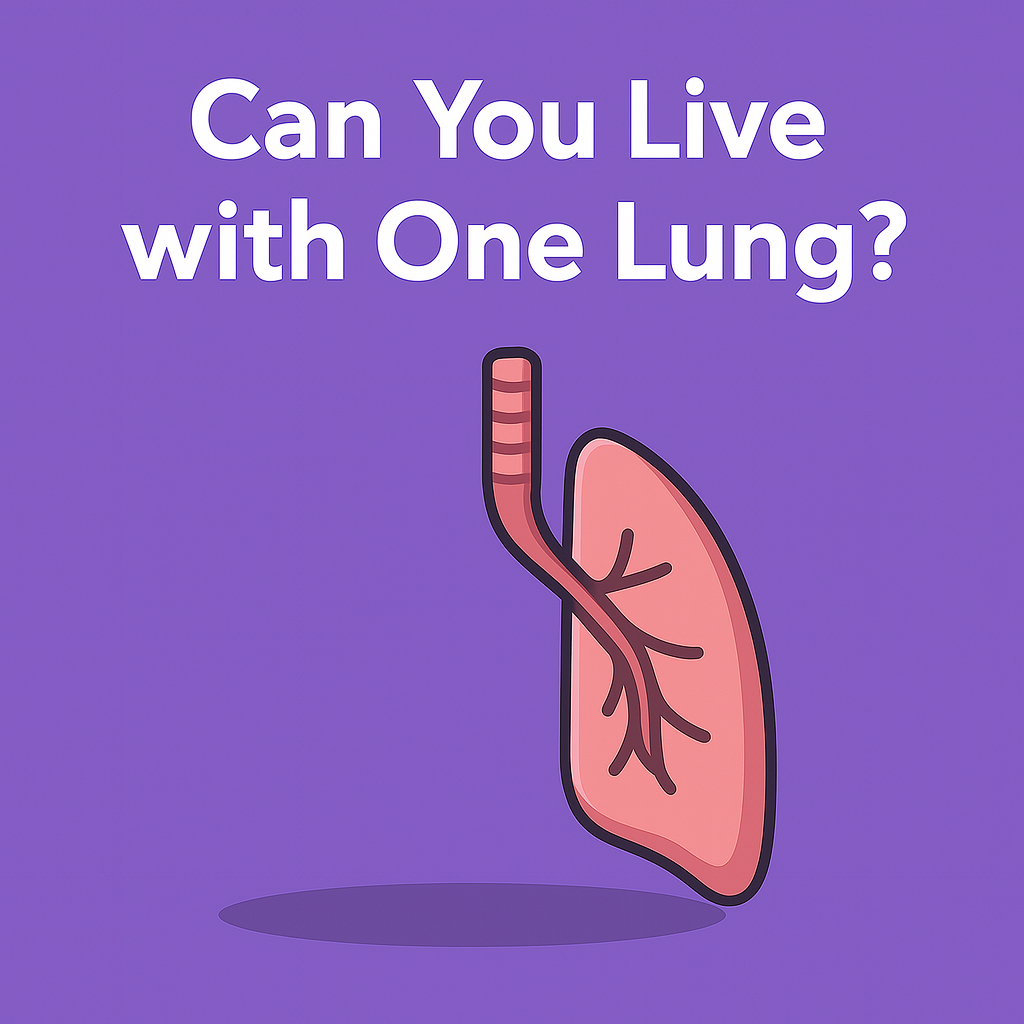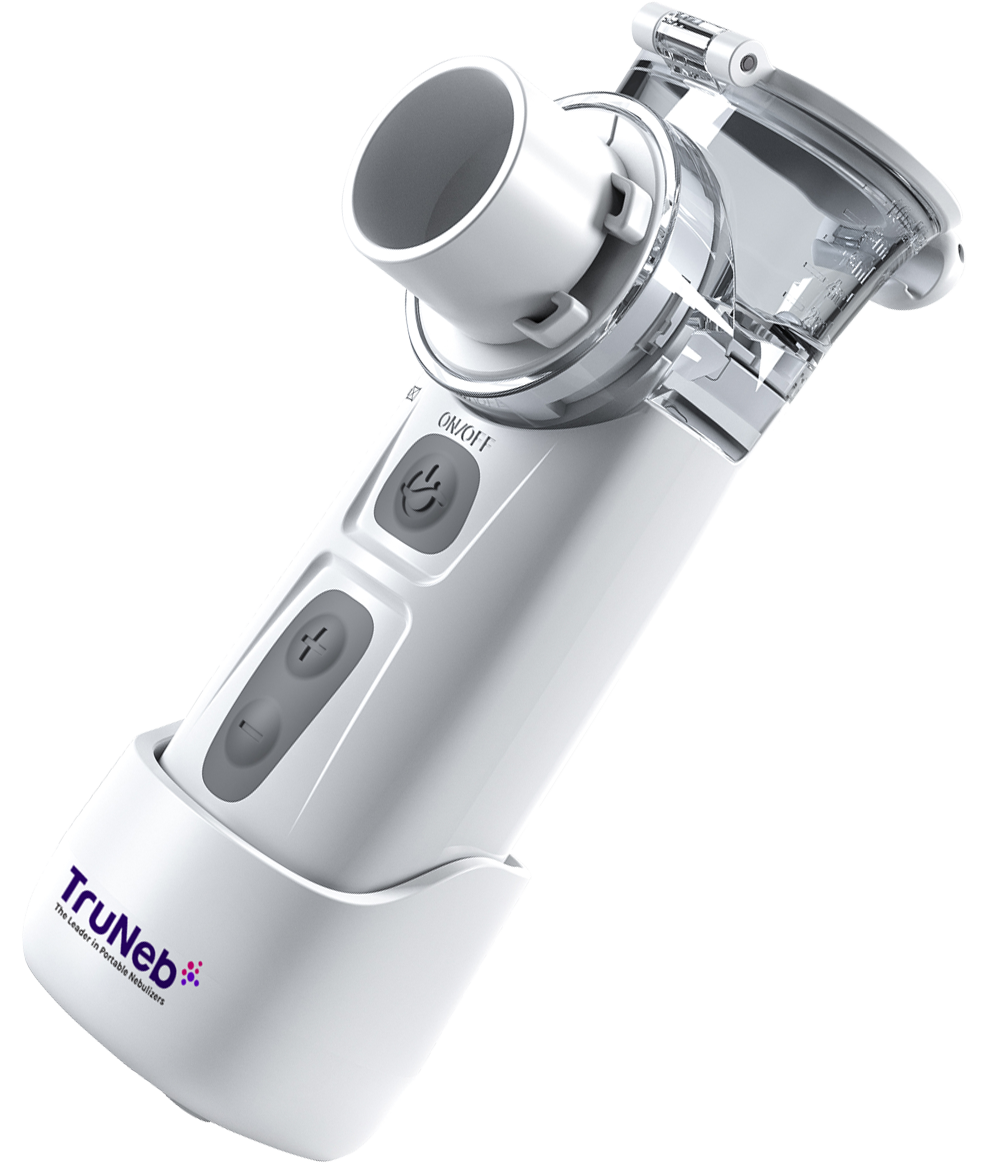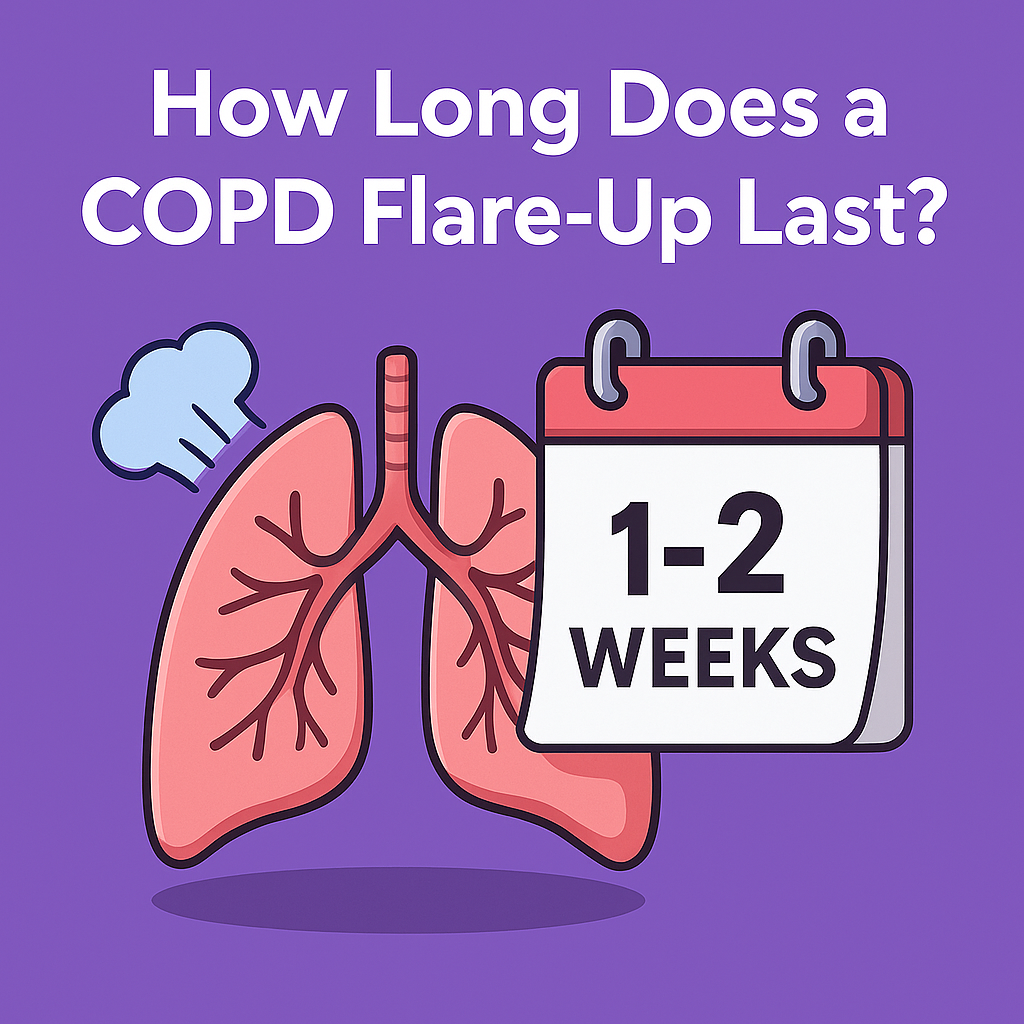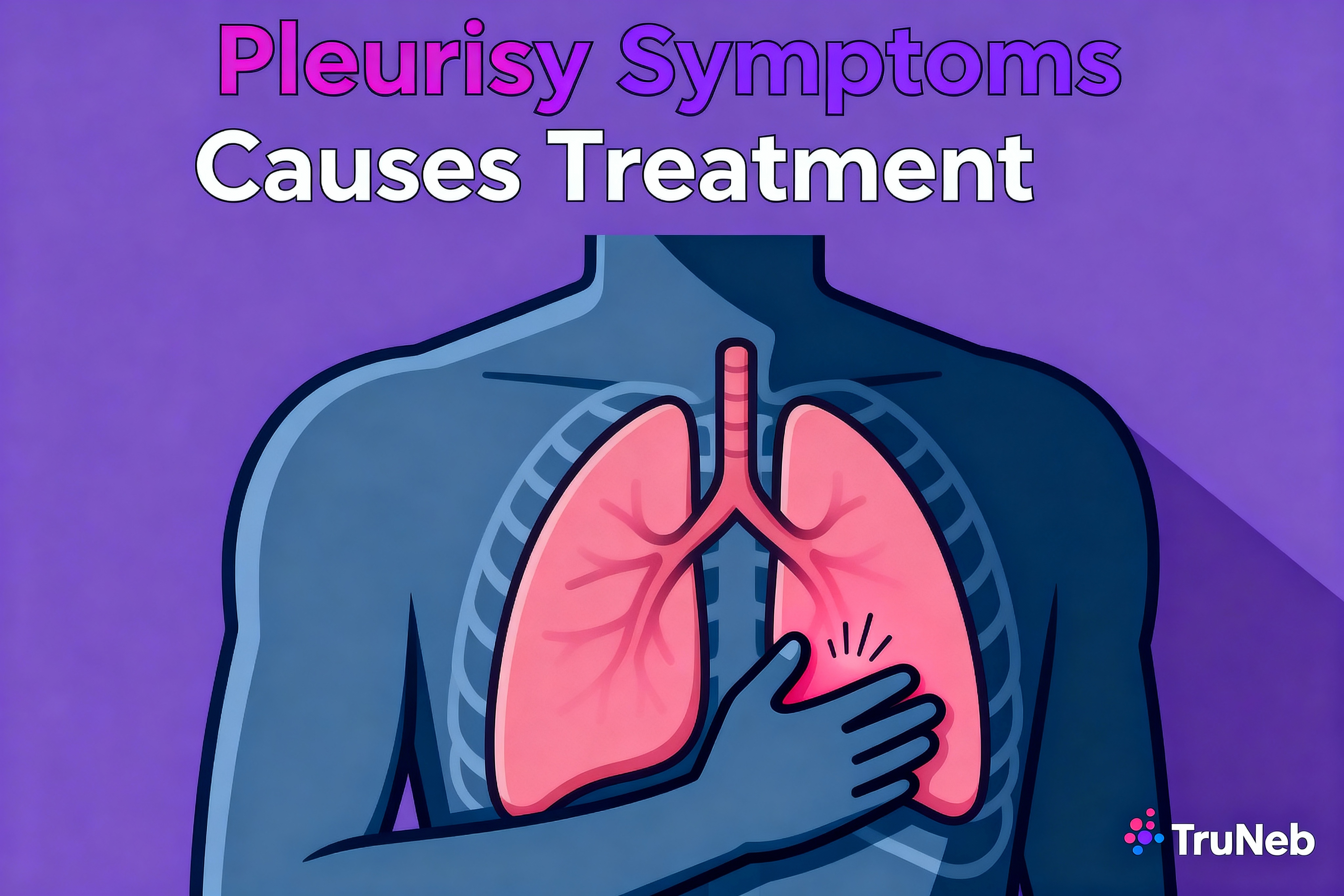On this page

Yes, you can. And thousands of people do.
Imagine waking up from surgery and knowing one of your lungs is gone. It’s a scary thought. But here’s the part that surprises most people: your body can adjust. One healthy lung can supply enough oxygen to live, walk, work, and even exercise.
Whether you're facing a surgery yourself or searching out answers for someone you love, this guide breaks it down. From why lung removal happens to what life looks like after, you’ll get clear, honest information.
Let’s start with the big question: how does someone end up with just one lung?
Why Would Someone Have Only One Lung?
Most people who live with one lung weren’t born that way. It usually happens after a surgery called a pneumonectomy, where doctors remove a lung that’s too damaged to save.
Here’s why that might happen:
- Lung cancer
The most common reason. If a tumor can’t be removed with a smaller surgery, the whole lung may need to come out. This is sometimes the case with cancers like mesothelioma, too. - Severe damage from disease
Conditions like tuberculosis, advanced pneumonia, pulmonary fibrosis, or major fungal infections can destroy a lung beyond repair. In rare cases, doctors may remove one lung in patients with end-stage COPD or bronchiectasis. - Serious injury
After a car accident or major chest trauma, one lung may be too damaged to function and needs to be removed to protect the rest of the body. - Born with one lung
This is extremely rare, but some people are born with just one lung or one that never fully developed. Many live healthy lives without even realizing it until later in life.
Before removing a lung, doctors run tests to make sure the other one is strong enough to handle the job on its own. If it is, your body can adapt surprisingly well.
The One-Lung Surgery: What to Expect
A pneumonectomy is a big surgery, but doctors have it down to a science. You’re completely asleep under general anesthesia. The surgeon either opens the side of your chest (called a thoracotomy) or uses smaller tools through tiny incisions — a less invasive method called VATS.
During surgery, the entire lung is removed — not just a piece. The right lung has three lobes, the left has two. Whichever side is affected, they take it all. The procedure usually takes two to three hours, followed by a stay in the hospital to monitor your recovery.
In some cases, the ribs need to be gently spread to access the lung, which can make recovery near the incision more painful. A chest tube may be left in temporarily to help drain fluid and air from the chest.
There are risks, like with any major surgery. Bleeding, infection, or strain on the heart can happen. That’s why it’s only done when truly necessary, and only after doctors are confident your other lung can handle the work.
Once that lung is out, the body doesn’t waste time. Your remaining lung gets to work right away.
Right After Surgery: What Recovery Feels Like
After surgery, you’ll wake up in a recovery room or the ICU. Nurses and doctors are right there, monitoring your breathing, managing pain, and making sure everything looks stable.
You’ll feel sore and tired. Breathing may be harder at first. You might be on oxygen through a mask or nasal tube. But most people start breathing on their own fairly soon — sometimes even within the first day.
Expect to stay in the hospital for several days to a week, depending on how you're healing. Doctors will watch for things like bleeding, fluid buildup, or small air leaks from the surgery site. These sound scary, but the care team knows exactly what to look for.
One thing they’ll get you doing early? Breathing exercises. You’ll use a tool called an incentive spirometer to help expand your remaining lung. You’ll also be encouraged to cough and take deep breaths, even if it hurts a little. It’s important — it helps prevent complications like pneumonia and keeps that one lung strong.
By the time you’re ready to go home, you’ll likely be walking short distances and breathing comfortably at rest. Recovery is real, but it’s doable. And for many, this is the start of a healthier chapter.
Living with One Lung: Daily Life and Adjustments
Living with one lung can take some getting used to. But for most, daily life feels surprisingly normal! Once your body recovers from surgery, you’ll start finding your rhythm again. Here’s what to expect, from breathing changes to activity levels, and how to keep your remaining lung strong.
Breathing and Oxygen
You might be surprised to learn that one lung can oxygenate your blood just fine during rest and light activity. Most people with one healthy lung don’t need supplemental oxygen unless they also have another lung condition like COPD or asthma.
Your lung may even expand slightly over time to pick up the slack. It won’t fully replace the capacity of two lungs, but it adapts well enough to keep you moving through everyday life.
Feeling Short of Breath
It’s normal to feel winded more easily, especially when you're climbing stairs or walking uphill. Your total lung capacity is about 50 to 70 percent of what it was before surgery. That means you might need to slow down, take breaks, or build up your stamina over time.
This DOESN’T mean you're fragile. It just means your body needs to work a bit harder, especially during exertion and that’s completely okay.
Exercise and Activities
Staying active is one of the best things you can do to keep your lung strong. In fact, regular movement helps improve endurance and lung efficiency.
Here are activities you can easily still enjoy with one lung:
- Walking or hiking
Start slow, pace yourself, and build up distance as you go. - Light jogging or cycling
If your doctor clears you, these can be great ways to stay fit. Just expect to go at a more moderate pace. - Swimming
Gentle swimming is excellent for the lungs. You may notice a slight change in how you float due to reduced lung volume, but your body adjusts quickly. Avoid strenuous laps unless you’ve built up the endurance. - Climbing stairs or lifting objects
These are fine but might require breaks. You’ll learn your limits and how to work with them. - Recreational sports
Golf, doubles tennis, bowling, and similar activities are usually no problem. Even running a 5K is possible with proper training. Some athletes have continued competing with just one lung.
Check out the amazing story of Donald Cantrell, a man who had lung removal surgery before he even turned 20 due to complications from pneumonia when he was a young child. Throughout his life he ran marathons and did triathlons. And as a man now in his 80s, he’s lived a very active life.
What to Avoid
At least in the early months, skip anything that demands intense physical strain unless you’re fully cleared. That includes heavy weightlifting, marathons, or anything that leaves you breathless for long periods.
Scuba diving is especially risky because of pressure changes and lower lung reserve. It requires specific medical clearance. High-altitude hikes may also require gradual acclimation, since there’s less oxygen in the air.
Energy and Fatigue
Fatigue is common at first. Your body is working hard to adjust, and healing takes time. Rest when you need to. A lot of people find that after a few months, they regain their energy and can do most things they enjoyed before surgery.
Driving and Work
Once you’re off pain medications and feeling steady, driving is safe. Returning to work depends on your job. Office work or desk jobs can resume fairly soon. More physical roles may require light duty or a phased return while your stamina rebuilds.
Sleeping
It might be easier to sleep propped up at first, especially if lying flat makes breathing feel tight. Sleeping on one side can feel better than the other. These preferences vary — you’ll figure out what works best for you.
Protecting Your Lung
With only one lung, you want to keep it as healthy as possible:
- Don’t smoke. Ever!That includes secondhand smoke. Smoking damages lung tissue fast — and you only have one left.
- Avoid air pollution and chemicalsWear an N-95 respirator if you're around fumes, paint, or dust.
- Cover your mouth in cold weatherCold air can irritate your lung. A scarf helps warm the air before it hits your airway.
Monitoring Your Health
Pay attention to changes. If you notice sudden shortness of breath, a lingering cough, or any unusual symptoms, don’t wait. Call your doctor. With one lung, small problems can feel bigger. Early treatment makes a difference.
Part of ongoing monitoring by your doctor might include periodic PFTs/spirometry, which test your lung function and strength. Scans will likely be recommended for anyone that had their lung removed because of cancer.
Staying Healthy with One Lung
You’ve only got one… so treat it like gold! Here are smart, simple habits that make a difference:
- Move your body, even a little
Walking, stretching, and gentle aerobics help your lung work more efficiently. Pulmonary rehab programs are a great option if you want expert guidance. - Eat light, eat right
Carrying extra weight makes breathing harder. Aim for balance: lean proteins for healing, fruits and veggies for lung-supporting antioxidants. - Drink more water
Staying hydrated thins mucus. That means your lung can clear out gunk more easily, especially during cold or allergy season. - Stop infections early
Wash your hands. Avoid sick people. Stay current on flu, COVID, and pneumonia vaccines. If a cough lingers, don’t wait — call your doctor. - Quit smoking for good
Smoke damages what’s left. Whether it’s firsthand or secondhand, it doesn’t belong near your lungs. Use patches, support groups, whatever it takes. - Stick to your checkups
Pulmonologists may run breathing tests or scans to track your lung’s function. These visits help catch issues early and keep you feeling your best. - Use what helps
If your doctor recommends a CPAP, inhaler, or nebulizer, use it consistently. For conditions like asthma or COPD, a portable nebulizer like TruNeb can make treatments easier at home. - Practice better breathing
Diaphragmatic breathing and pursed-lip breathing help your lung work smarter, not harder. Just a few minutes a day can make tough moments feel more manageable.
| Exercise | How to Do It | When to Start | Benefits |
|---|---|---|---|
|
Diaphragmatic Breathing (Belly Breathing) |
Sit or lie down with one hand on your belly, one on your chest. Breathe in slowly through your nose, letting your belly rise. Exhale through pursed lips, letting your belly fall. |
Day 1–2 (as tolerated) | Strengthens diaphragm, improves oxygen exchange |
| Pursed-Lip Breathing |
Inhale slowly through your nose. Exhale slowly through pursed lips (like whistling), 2x longer than inhale. |
Day 1–2 | Helps release trapped air, reduces shortness of breath |
| Incentive Spirometry |
Place lips around mouthpiece and inhale slowly to raise the marker. Hold breath for 3–5 seconds, then exhale normally. Repeat 10x/hour while awake. |
Hospital stay & early recovery | Prevents lung infections, keeps remaining lung open |
| Huff Coughing |
Take a deep breath, hold it 2–3 seconds. Exhale forcefully with an open mouth, saying “ha” or “huff.” |
After week 1–2, or when mucus is present | Clears secretions without straining your chest |
| Box Breathing |
Inhale for 4 counts → Hold 4 counts → Exhale 4 counts → Hold 4 counts. Repeat for several cycles. |
Weeks 2+ (once stable) | Calms nervous system, improves breath control |
| Paced Breathing for Activity |
Inhale before exertion (e.g., before standing). Exhale slowly during effort (e.g., while climbing stairs). |
During rehab & daily activity | Prevents fatigue, makes movement easier |
Can One Lung Adapt and Get Stronger?
Yes — and it’s one of the body’s most impressive tricks. Over time, your remaining lung can expand slightly to take in more air and improve oxygen exchange. It won’t double in size, but it will do more with what it has. Your body also gets better at pulling oxygen out of each breath.
Other organs adjust too. The diaphragm rises on the side where the lung was removed. The heart and remaining lung may shift into the open space. And over weeks or months, that space gradually fills with sterile fluid, which is completely normal and helps stabilize everything.
What doesn’t happen: your lung doesn’t grow back. Unlike a liver, once lung tissue is removed, it’s gone for good. That’s why your remaining lung (and how you care for it) becomes the MVP.
So what does that mean for long-term health? Let’s talk life expectancy.
Life Expectancy with One Lung
Does having one lung shorten your life? When talking about average otherwise healthy people, the answer is no. You can live just as long with one lung as you would with two.
What matters more is why your lung was removed and what else is going on with your health:
- If you had cancer and it was fully removed, your outlook depends on whether it returns — not the surgery itself. Lots of lung cancer survivors go on to live full lives. Take someone like Emily: young, healthy, had one lung removed, and years later she’s raising kids and doing great.
- If you lost a lung to trauma (like a bad accident), once you’ve healed, your life expectancy can be totally normal.
- If the cause was advanced lung disease, like end-stage COPD, your prognosis depends more on the disease than the surgery. The surgery was likely a last resort, so the disease is still a factor.
Here’s the encouraging part. One lung can give you 70–80% of your original breathing capacity. That’s enough to live a full, active life… especially if you stay healthy.
The bottom line is, people with one lung can outlive people with two if they care for their health. Don’t smoke, stay active, and watch for infections. Protect what you’ve got, and your body will do the rest.
For most people, life with one lung eventually feels… normal. In fact, some even forget they’re living with half the lung power — because it doesn’t hold them back!
Common Questions About Living with One Lung
Q: Can a lung grow back or regenerate after it’s removed?
A: No. Once a lung or lobe is removed, your body can’t regrow that tissue. The remaining lung might expand a bit to improve its capacity, but it won’t replace the one that’s gone. The good news? One healthy lung is usually enough to keep you breathing and living well.
Q: What fills the space where the other lung was?
A: At first, the space is filled with air. Over time, your body naturally produces fluid that slowly fills the gap. Nearby organs like the heart and diaphragm shift slightly to adjust. This process is normal and doesn’t cause problems.
Q: How much activity can you really do with one lung?
A: Most people go back to everyday life. You might need to slow down during heavy exertion, but walking, hiking, biking, and even recreational sports are often possible. With training and doctor approval, many return to an active lifestyle.
Q: Do you need to be on oxygen or use special equipment with one lung?
A: Not in most cases. If your remaining lung is healthy, it can handle daily breathing without help. Some people use oxygen right after surgery or during rehab, but long-term oxygen isn’t typical unless you have another condition like COPD.
Q: How long does it take to recover and feel normal after losing a lung?A: Most people are back to basic routines within two to three months. Full recovery — where you rebuild strength and adapt to new limits — can take up to a year. Everyone heals at their own pace, but steady progress is common with rehab and support.
Q: Does having one lung affect your life expectancy?
A: It depends on the reason your lung was removed. If you were otherwise healthy or the surgery cured your condition, your life expectancy may be unchanged. Many live 20 to 30 years or more with one lung, and without major limitations.
Q: What’s the difference between a pneumonectomy and lobectomy?
A: A lobectomy is the removal of one lobe (part) of the lung. A pneumonectomy is the removal of an entire lung.
Losing a lung is a major life event, but it doesn’t mean life has to stop. Once your body adapts, most people are surprised by how capable one lung can be. You might move a little slower at first or need time to rebuild stamina, but everyday routines, favorite hobbies, and even travel are still on the table.
For additional resources and support groups, the American Lung Association is a great place to start.
And for all your breathing treatment needs — TruNeb™ is here to help!







